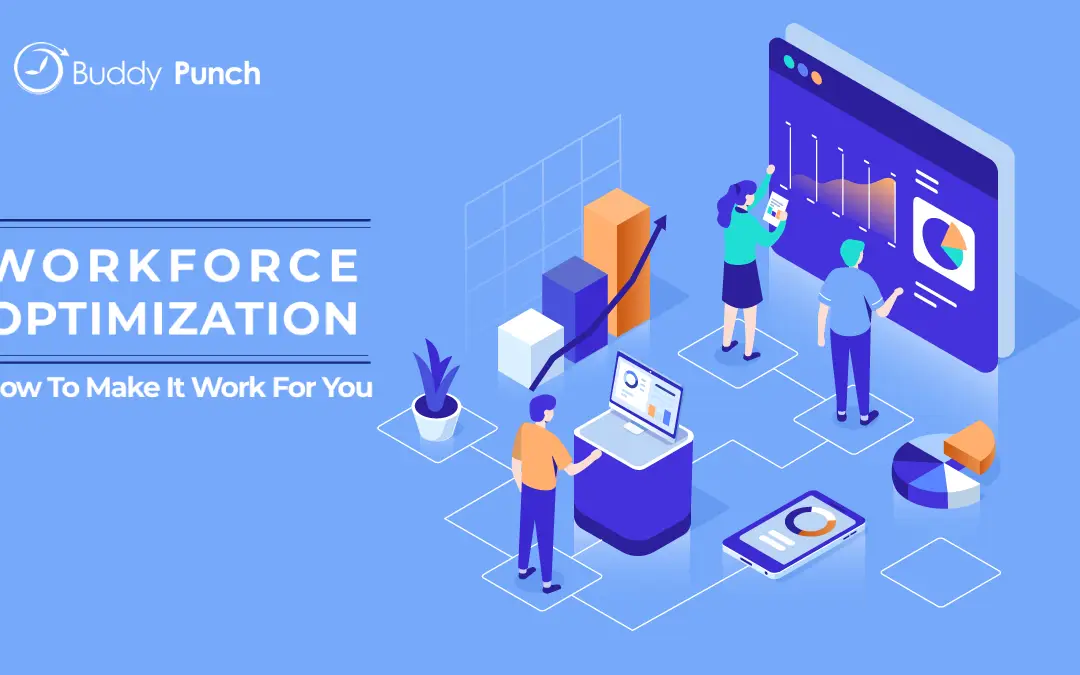Workforce Optimization And How To Make It Work For You

First of all, what is “workforce optimization”? The actual definition of workforce optimization (WFO) is “a business strategy focused on balancing customer satisfaction, service levels, workforce scheduling, operational costs, and other key performance metrics for a business to get the maximum benefit out of the employees working for them at any given time.” In essence, it is ensuring that all avenues of your business are running smoothly, effectively, and efficiently.
When a business starts to grow, it is common for owners or managers to instinctively begin hiring more employees. It may seem like the natural thing to do, but it can often be more of a hindrance and a draw on your budget. WFO combines information collected from both human and technological resources to not only work smarter but more efficiently and faster. It includes anticipating staffing needs and being able to understand how your employees work so you can best utilize their strengths towards a goal. WFO helps to eliminate errors and streamline the decision-making process, all adding up to savings for your business.
What are the comprehensive benefits of Workforce Optimization?
- Enhanced Customer Service
- Fewer Compliance Risks
- Increased Employee Efficiency and Productivity
- More Returning Customers
- Increased ROI
- Cost-Effective Operations
How to best utilize WFO
- Focus on the Customer
You obviously cannot have a business without customers. Take an unbiased look at the customer experience or survey some of your current customers to note if customers are not a priority during a particular part of the process. Use this information to improve the customer experience and satisfaction.
- Make Use of Attendance Tracking and Time Management Options
Since time is one of the most valuable assets a business has, it is vital to managing employee attendance and their overall time management. This is one of the essential factors in workforce optimization.
It is time to upgrade those manual time cards and invest in time attendance software. Manual input of time leaves you open to human error and the possibility of “buddy punching” and other factors that cost your business money. Overtime can quickly add up. Being able to keep track of it will help you see if any shifts are understaffed. Automated time tracking software/systems significantly reduce the risk of errors and quickly give you an overall view of employee attendance and show you if their time is being utilized in the best way possible.
- Streamline Scheduling
It is essential to identify and reduce any overlap or gaps in your scheduling. Scheduling software can save a significant amount of time for you and your management team. Manually setting up scheduling and keeping track of employees’ availability can be a great drain on your time. Scheduling software allows nearly-constant access to employees’ availability, current schedules, scheduled time off, skillsets, attendance records, and performance records – all in one place and easily viewable. Combining all of this information allows you to schedule the most-qualified employees for the tasks and time frame needed.
- Track Performance and Tasks
Workforce analytics tools and task tracking tools go beyond merely helping you manage time and attendance. They can give you in-depth insight into whether or not your current processes are effective, and what areas could use improvement. Tracking your employees’ tasks and performance can help you determine if your workers are meeting their daily goals quickly and efficiently. Workforce optimization ensures that each employee is assigned to the task or job best suited for his skills.
- Strengthen Employee-Management Communications
Strong employee-management communication is vital to an efficiently-running business. Utilizing time management and task tracking software frees up management’s time tremendously. Instead of continually tracking schedules and handling time cards, management can concentrate on their workers and be directly involved in day-to-day operations. Workers can quickly and easily report any processes or tasks that are affecting smooth operating procedures, and the problem can be addressed quickly to ensure the highest productivity possible.
Remember that Workforce Optimization is a process – not just a one-time task. You must continuously strive to improve all parts of your business if you wish to succeed and continue to grow. Also, note that WFO does not happen overnight. If you are wanting to take advantage of WFO for the first time, start gradually and address one department, system, or process at a time before moving on to another. It will be hard work, but it will ultimately lead to improved customer satisfaction and more content employees.
